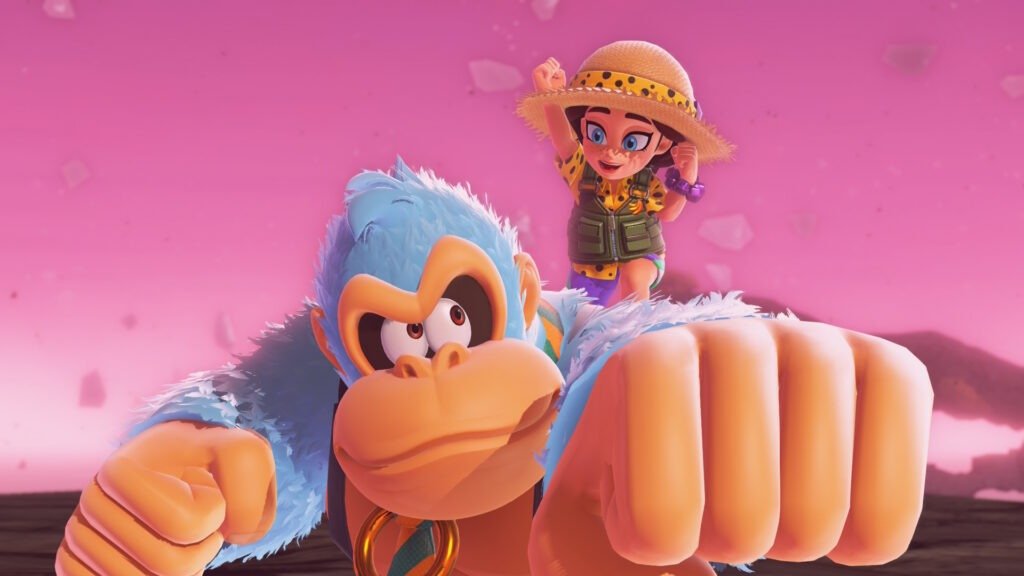Donkey Kong 64 is one of my favorite video games. I feel like it’s essential to bring up, given that Donkey Kong Bananza is the first new 3D platformer for DK in 26 years. Donkey Kong 64 is by no means a perfect game, and its maximalist approach to the 3D collectathon rubbed many people the wrong way, but I personally loved it. Maybe it’s nostalgia talking, or perhaps it’s because of the variety of challenges in each level, each of which is wonderfully designed, and a killer soundtrack by Grant Kirkhope. Regardless, I love it with all my heart, and nothing will change that.
I bring all of that up because Donkey Kong Bananza has a lot to prove. It’s the first new Donkey Kong game in 11 years, and the first in what feels like an eternity, developed by Nintendo. It’s the next game developed by the Super Mario Odyssey team, a game that helped revolutionise what it meant to be a 3D Mario game. It’s the next exclusive for the Nintendo Switch 2, which so far has had Mario Kart World to keep it afloat. And, of course, it’s indirectly the follow-up to one of my favourite games of all time.
No pressure.
When I first started up Donkey Kong Bananza, one of my first thoughts was how straightforward it was. When the game boots up, you’re given a brief tutorial showing off DK’s moves as you explore around Ingot Island, but it’s not long before you’re thrown into your first level proper, and the game points you in the direction you’re meant to be going. You have to chase down Void Co. as they are attempting to dig to the Planet’s Core, stealing Banandium Gems along the way to power their massive drill. At every point in the game, you’re always told where Void Co. is, what they’re doing, and how to stop them.
Donkey Kong Bananza – DK64 Refined?
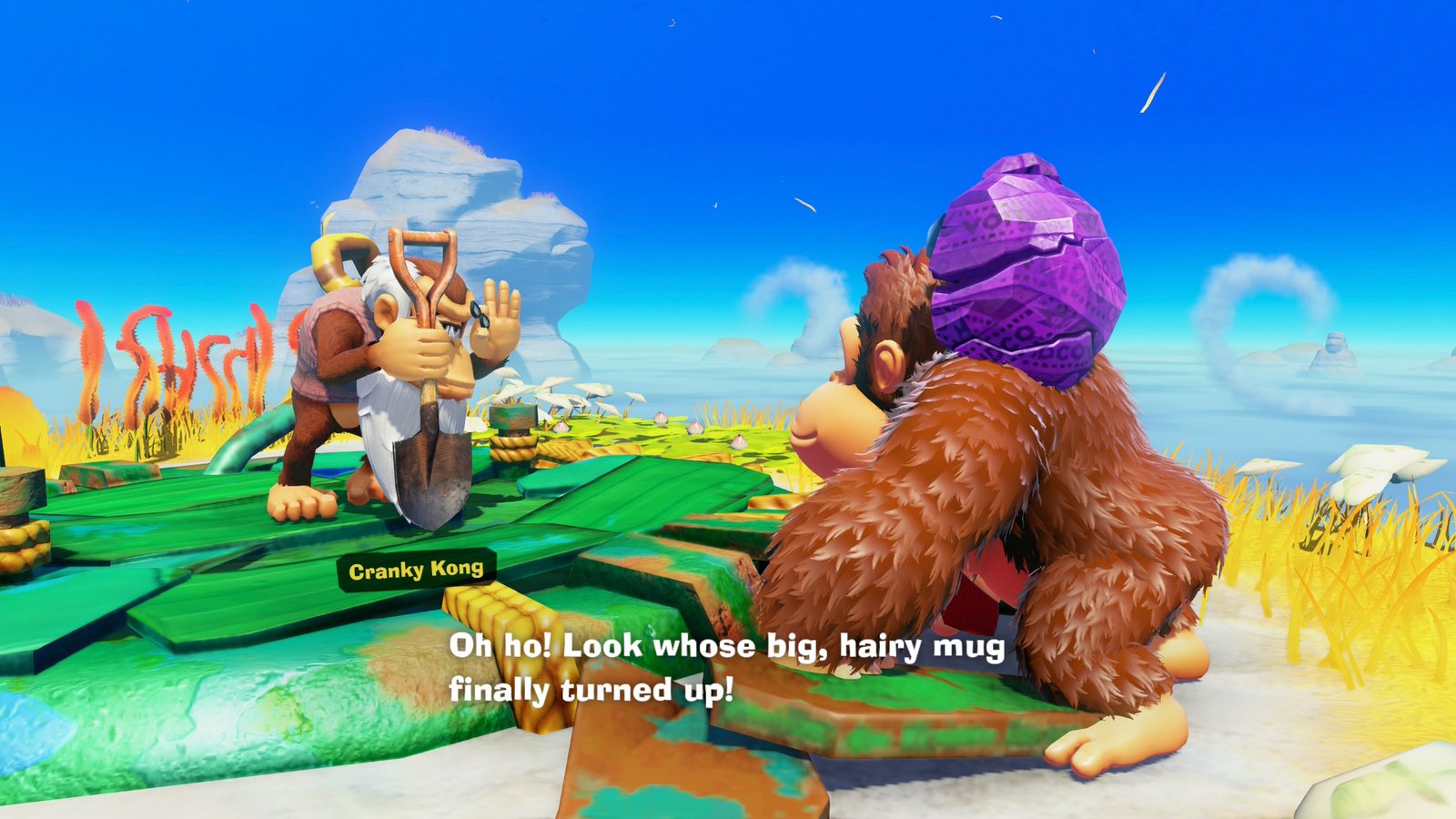
Nintendo has undergone a shift in development philosophy in recent years, where they’re more interested in presenting their games as toyboxes, giving gamers the tools to play in these worlds, and letting them run wild. Breath of the Wild, Tears of the Kingdom, Bowser’s Fury, and, to a lesser extent, the recent Pokémon games all abide by this mindset, where you have a goal, but how you get to that goal is entirely up to the player.
Donkey Kong Bananza shakes up that formula. When you reach the first level, a seaside lagoon full of scavenger monkeys, the game makes it very clear where you’re meant to go. It’s still an open level, allowing you to explore the waters at your own pace, but if you want to progress further to the Planet’s Core, you’re going to have to do what the game wants you to do.
I personally love this direction where the objective is always presented to you, but you’re free to ignore it for as long as you want, which prevents each level from feeling aimless. Each level is chock-full of two types of collectibles – Banandium Gems and fossils – and you can hunt for as many or as few as you want. Fossils can unlock costumes, which can have passive buffs like increasing the amount of gold you earn or lessening the damage you take from hazardous terrain. As for Banandium Gems, for every five you collect, you’ll earn a skill point, which can then be allocated to your moves and stats to make destroying everything just a little bit easier.
You don’t need to collect a specific total of either item to unlock a new level in Donkey Kong Bananza, so how much you see of each level and how many items you collect is entirely up to you. This is an ideal fusion of the maximalist ideas of Donkey Kong 64 and the more tight level-based progression of a Mario game. Let the completionists like me toil away at finding all of the Gems and fossils we want, while more casual fans can decide for themselves what to do and how much of it.
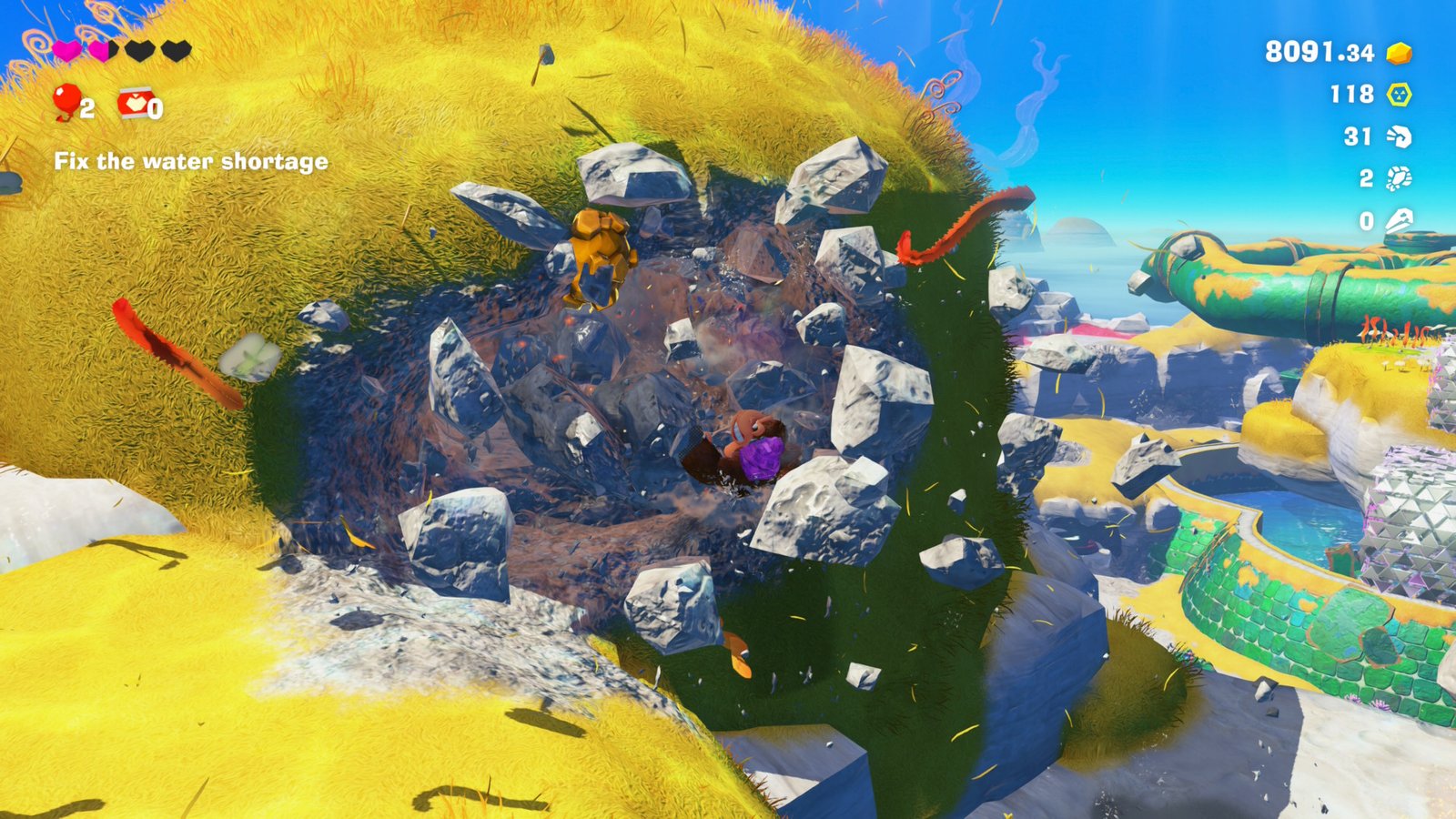
Exploration is the name of the game in Donkey Kong Bananza, and from the tutorial, you’re introduced to the core gimmick of the game, that being, DK can, and will, destroy everything. See a wall? You can break through it. Is there something buried in the ground? Smash the ground to dig it up. Something on the ceiling? Rip the ground up and chuck that hunk at it. Virtually everything in the game can be destroyed, and from the moment you enter each new level, you’re given free rein to destroy everything in sight.
Donkey Kong Bananza encourages you to play fast and loose with its mechanics. While there are some slower-paced and methodical platforming challenges, mostly relegated to challenge rooms, nearly everything else encourages you to charge forward and destroy everything in your path. Dig through the walls to get to a hidden Banandium Gem, then scope out a hidden fossil nearby and break the walls to get to it. Maybe when you’re there, you’ll see something above you and you’ll break your way out of the ground to reach it. The levels are never so expansive that it takes you too long to get to the next Gem. When you’re in the right state of mind, you can blaze through collectibles like you’re in a flow state, and it’s just so damn satisfying.
And the game gives you the tools needed to help you on your expedition. Donkey Kong has a simple slap that can illuminate hidden objects, helping guide where you should go next. As you’re exploring, you may uncover treasure chests, which can contain maps that will show you where a Banandium Gem or fossil is hidden. Plus, you can buy those maps at stores at the cost of some gold, which you will have plentiful amounts of in no short time, given how gold practically showers on you whenever you destroy some chunk of the world.
A World Breaker in Donkey Kong Bananza
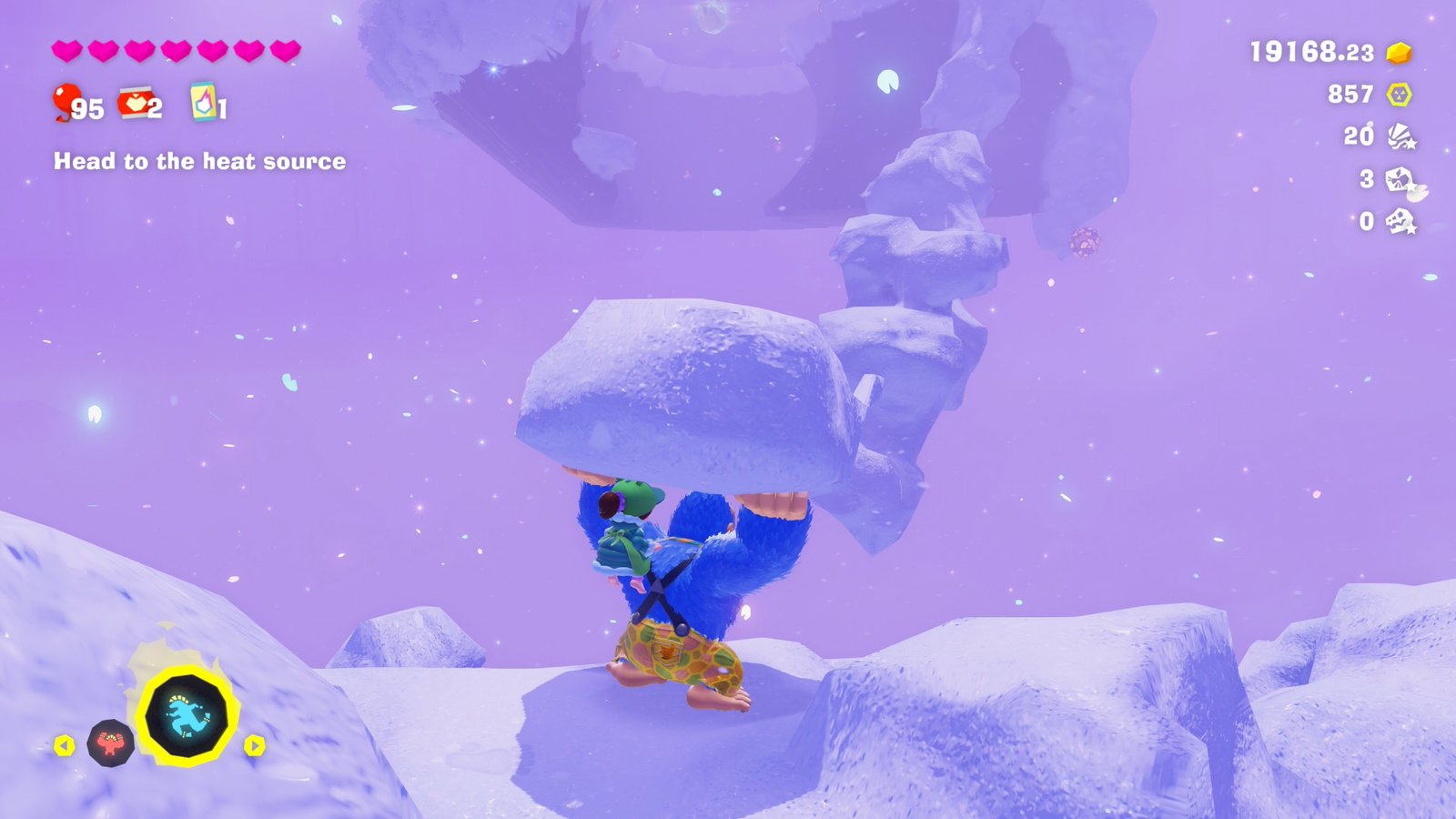
Some worlds may have as few as a handful of Banandium Gems to collect, while others may have close to 100, but all of them are satisfying to get. I laughed whenever I found a gem and completely ignored that puzzle or gameplay sequence Nintendo had designed it around, solely because I just charged through some dirt, snatched it, and ran away. At other times, I felt genuinely thrilled about figuring out how to use the environment and mechanics to solve a puzzle in Donkey Kong Bananza.
Take, for example, the snow level in the game, the Freezer Layer. One of the last few Banandium Gems I needed to get was on a floating island in the sky. There were no rocket barrels or ropes to connect it to, and I had already beaten the boss of the level, so there wasn’t a story lock preventing me from getting to it. It was just hanging in the sky, mocking me. So, I started to do what any player would do in a situation like that. I began to throw things at the wall and see what stuck, quite literally.
This is where I realised how robust the tech of Donkey Kong Bananza really is. Nintendo has been hyping up the voxel technology behind the game, highlighting how it enables the world to be fully destructible, with each type of material possessing its unique physics and properties. When I threw a wad of snow at the island, it stuck to the bottom of it. I threw another glob onto the pile of snow I had thrown, and it built upon that snow. I then realised I could keep chucking snow at the island until I made a makeshift bridge, allowing me to simply hop over to it, collect the Banandium Gem, and be on my way.
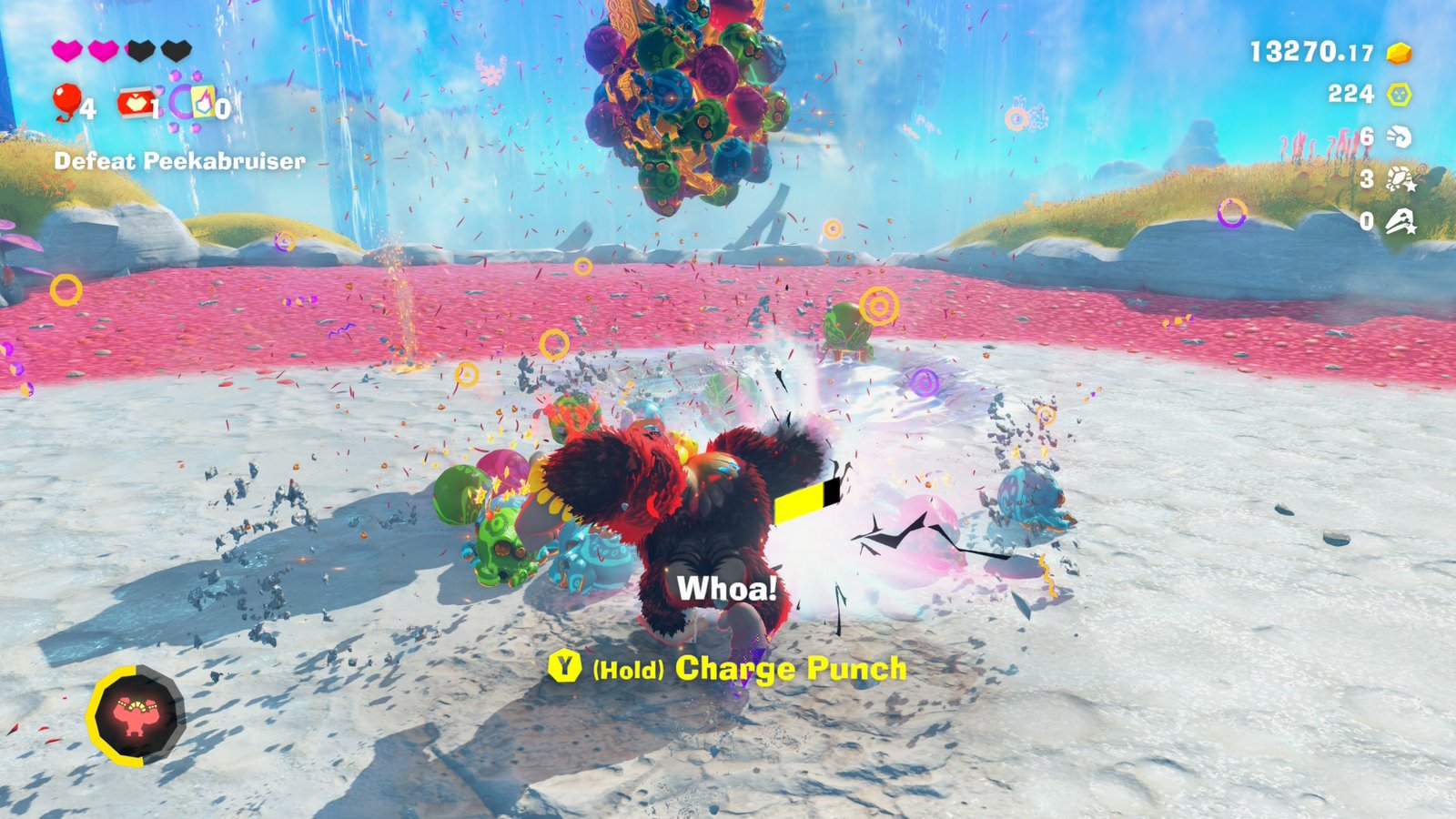
Sure, I could have solved it by eventually getting a hold of a power-up that transforms Donkey Kong into a flying ostrich, but this method was just as viable, much in the same way breaking through the walls and claiming a Gem without doing the challenge is. It still retains that sense of freedom and discovery that Nintendo has mastered since Breath of the Wild, but in a much more chaotic way. Organised chaos is the name of the game in Donkey Kong Bananza, and I wouldn’t have it any other way.
Speaking of power-ups, as you progress further into the game, DK will unlock transformation abilities called Bananzas, which will let him transform into a giant animal. These will temporarily enhance DK’s available skills, but they can also give him other one-time abilities like running on water or flying in the air. These power-ups are all based on a meter, and when that meter runs dry, the Bananza ends. The only way to charge it up is by collecting gold.
I’m of two minds about this in Donkey Kong Bananza. Firstly, going Bananza is a ton of fun. Stomping around as a giant ape with a rocking score blaring in the background is such a power trip, and it makes short work of any enemy or obstacle in your way. That being said, it also trivialises everything that gets in your way. If you have to fight an enemy, change into a Bananza form and give it a few hits until it’s dead. Don’t want to bother with platforming? Turn into the ostrich and fly over it all. Plus, given the rate at how quickly you acquire gold, once the Bananza ends, Donkey Kong will probably already have the meter charged and ready for you to change back into it and rampage unobstructed.
Too Much Destruction Can Be A Bad Thing
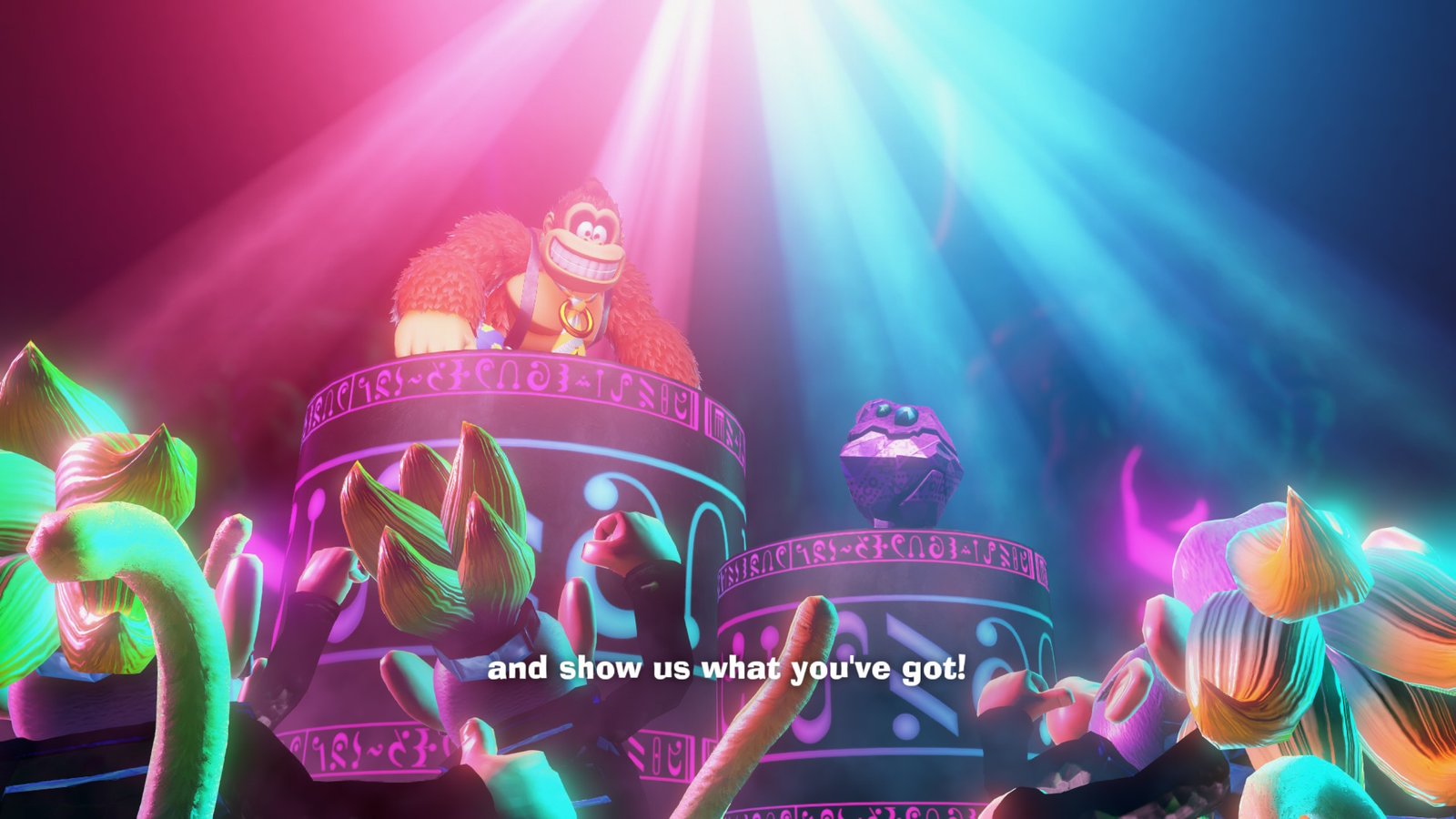
Because of the Bananza abilities, Donkey Kong Bananza becomes predictable once you realise how much you can abuse them. Bosses pose absolutely no challenge to DK, since when a fight starts, all you have to do is go Bananza and they’ll be dead in seconds. Throughout my playthrough, a boss never took me more than a minute, even when facing off against the members of Void Co.. They’re supposed to be these grand, epic encounters, complete with plenty of particle effects, but they’re honestly some of the lamest fights in any Donkey Kong game. Maybe not quite as brainless as Very Gwanty was in Donkey Kong Country, but coming mighty close.
And sadly, that isn’t my only criticism about Donkey Kong Bananza. For as satisfying as the game’s linearity can be, whenever you’re forced to engage with the story, it barely registers, and when it does, it’s for strange reasons. The game makes a big deal about your partner, Oddrock, a cute little rock buddy who tags along with DK, but not even an hour after teaming up with him, it’s revealed that Oddrock is Pauline. If that’s the case, why try to fool players with Oddrock? The marketing and box art are pretty adamant about showcasing Pauline, so why start with the Oddrock business? I mean, it’s not exactly a negative if I’m being honest, but just a weird little decision that doesn’t make a lot of sense.
But while the story criticisms are negligible, I can’t say the same for the camera. For the most part, the camera is in perfect working order. When you’re in a wide-open area and just running around, the camera follows you fairly well, and it can be adjusted relatively easily. The second you decide to start digging, though, it becomes aggravating in all the worst ways.
The camera often doesn’t know what to do, debating whether to zoom in on you or stay zoomed out, or make the environment transparent to help with navigation or to pop the textures in to reveal nearby hidden objects. Navigating the third layer, the Canyon Layer, which has a lot of vertical rocky cliffs to dig through, was especially nightmarish, instilling a weird sense of claustrophobia and panic over just how hard it was to gain control back in such a tight space, which is something I never felt in a video game before Donkey Kong Bananza.
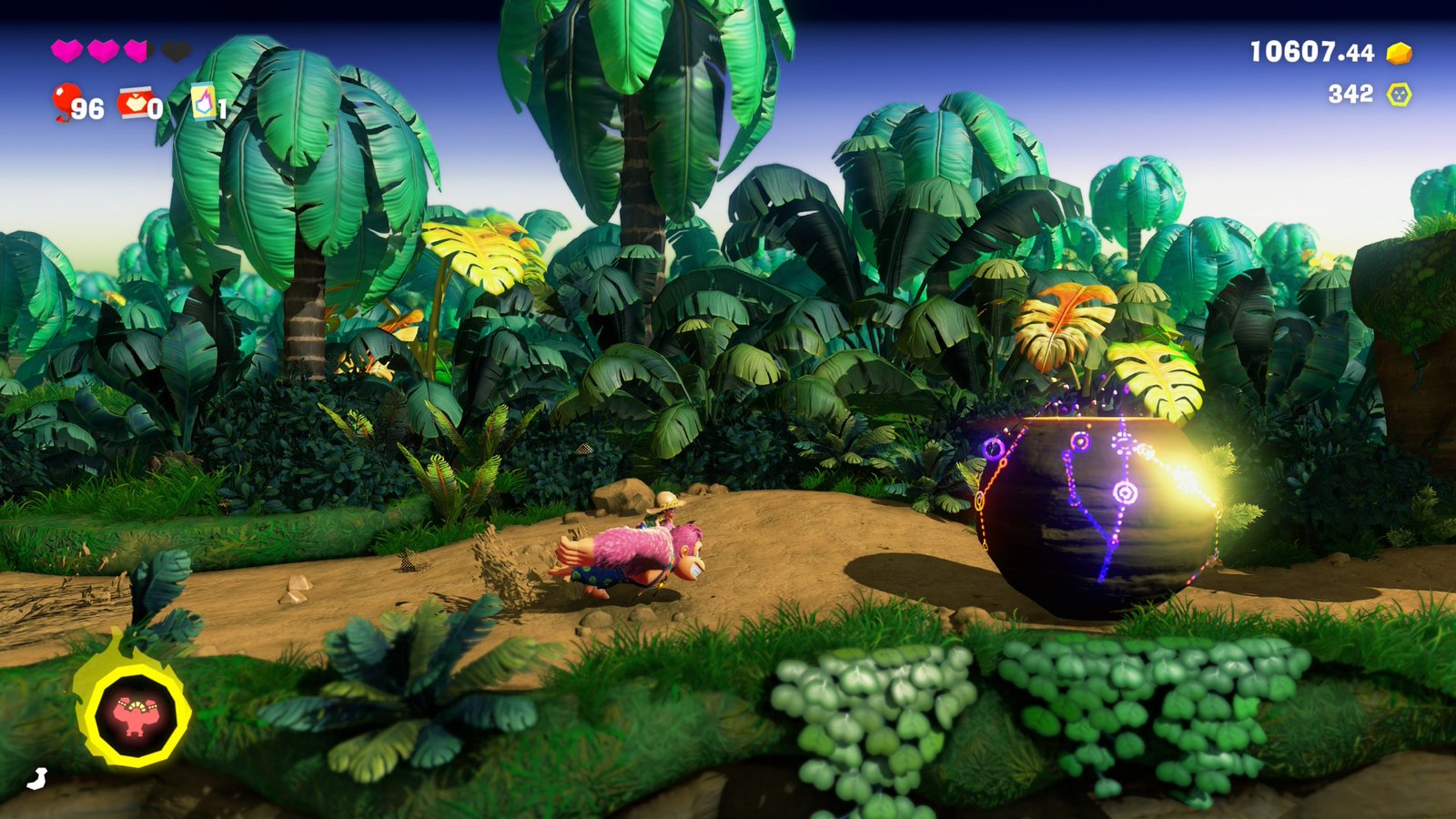
But the more that I play Donkey Kong Bananza, the less those problems matter to me. Like Donkey Kong 64, I can ignore its faults to a certain degree because the game itself is just fun. I love turning my brain off and just smashing through rocks, or mowing down enemies as DK turns into a giant monkey. I love filling out my stat screen with every Banandium Gem in each level and slowly watching the collectible screen creep up to 100%. Like all the best collectathons, I want to keep playing and collect everything there is to gather, not because the game tells me to, but because I want to.
Never in my life did I think that we would be getting another 3D Donkey Kong game, let alone one developed by Nintendo, but it’s here, and it’s some of the most fun I’ve had with a Nintendo-developed game in a while. I’d go so far as to say that Donkey Kong Bananza is the real killer app for the Switch 2, not Mario Kart World. World is fun, but Bananza is a blast.
Donkey Kong Bananza is now available for the Nintendo Switch 2.
SavePoint Score
Summary
Sporting some impressive voxel tech and with a chaotic energy unto itself, Donkey Kong Bananza is the first real must own Nintendo Switch 2 game

